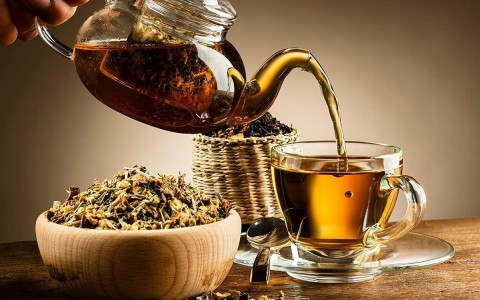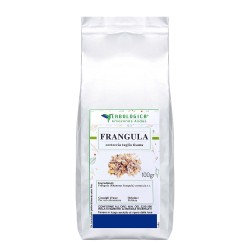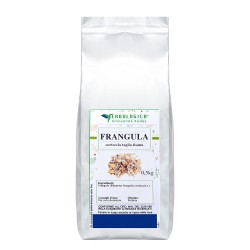
Frangula è un antico nome latino per le specie arboree note in inglese come Alder Buckthorn, European Alder Buckthorn o Black Alder.
Il termine deriva da frangere, che significa "rompere", e gula che significa piccolo frammento di cibo.
La frangula è conosciuta anche con i suoi nomi scientifici:
Rhamnus frangula, Rhamnus cathartica e Rhamnus lacera.
È un piccolo albero che raggiunge un'altezza di circa 4 metri, con fiori bianchi in estate seguiti da bacche blu-nere.
Il Coricarpus e la frangula appartengono entrambi alla famiglia delle Rhamnaceae e hanno proprietà simili, ma si distinguono per l'aspetto leggermente diverso.
Entrambi gli alberi sono stati utilizzati come rimedi erboristici per molti anni e sono ancora oggi comunemente usati.
Ecco ulteriori informazioni su di loro:
Che cos'è la Frangula?
Usi della Frangula
Effetti collaterali della Frangula
Come funziona la Frangula?
Il risultato
La Frangula è un piccolo albero che cresce nelle zone temperate e subtropicali dell'Europa e dell'Asia.
Per centinaia di anni è stata utilizzata come rimedio erboristico per trattare disturbi gastrointestinali, malattie del fegato e condizioni della pelle.
La frangula è stata utilizzata anche come rimedio per il dolore, le allergie e i problemi digestivi, come gonfiore e costipazione.
La frangula è stata utilizzata in modo simile nella medicina ayurvedica. Si ritiene che agisca come agente antinfiammatorio, antifungino e antibatterico.
La frangula è più comunemente usata come tè o tintura.
La frangula contiene antiossidanti, flavonoidi antinfiammatori e tannini.
La frangula è stata utilizzata per molti anni nella medicina erboristica tradizionale ed è ancora oggi comunemente usata.
Salute dell'apparato digerente:
La frangula è usata come rimedio digestivo per trattare gonfiore, gas e costipazione.
Salute del fegato:
La frangula è usata per trattare le malattie del fegato come l'ittero e l'epatite.
Condizioni della pelle:
La frangula è usata per trattare le malattie della pelle come la psoriasi e l'eczema.
Dolore: la frangola è utilizzata per il trattamento di dolori cronici come quelli articolari e lombari.
Salute delle vie urinarie:
La frangula è utilizzata per trattare le infezioni del tratto urinario.
La frangula può interagire con molti farmaci, come anticoagulanti, antidepressivi, farmaci per il diabete e per la pressione sanguigna.
La Frangula può essere tossica in dosi elevate a causa dell'alto contenuto di tannini nella corteccia.
Dosi elevate di Frangula possono causare nausea, vomito, danni al fegato e problemi gastrointestinali quali
La Frangula agisce attraverso una serie di meccanismi.
È noto che contiene antiossidanti e flavonoidi, utili per ridurre l'infiammazione.
La Frangula contiene anche proprietà antibatteriche e antifungine.
È stato dimostrato che la frangola riduce la quantità di colesterolo nel sangue, il che è utile per trattare problemi digestivi come gonfiore e gas.
È stato dimostrato che la frangola è utile anche nel trattamento di malattie del fegato come l'ittero e l'epatite.
Inoltre, è stato dimostrato che la frangola riduce la quantità di tossine nel corpo e le elimina dal sistema.
La Frangula è un utile rimedio erboristico dai molteplici benefici.
Può essere utilizzata per trattare una serie di condizioni, tra cui problemi digestivi, malattie del fegato, condizioni della pelle e dolore.
La Frangula può essere assunta in diverse forme e può essere applicata direttamente sulla pelle.
Può essere utilizzata da sola o come parte di un rimedio erboristico più complesso.
La frangula può essere utile per diverse condizioni di salute, ma può anche causare effetti collaterali.
La frangula è un utile rimedio erboristico dai molteplici benefici.
Può essere utilizzata per trattare una serie di condizioni, tra cui problemi digestivi, malattie del fegato, condizioni della pelle e dolore.
La frangula può essere assunta in diverse forme e può essere applicata direttamente sulla pelle.
Può essere utilizzata da sola o come parte di un rimedio erboristico più complesso.
La frangula può essere utile per diverse condizioni di salute, ma può anche causare effetti collaterali.



